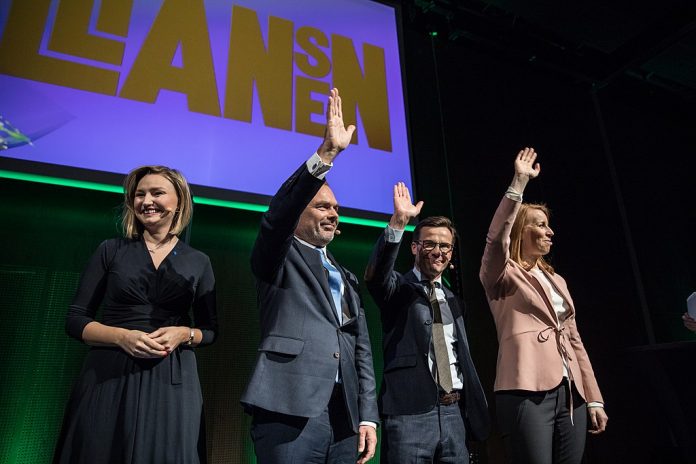2018 general elections in Sweden led to the second cabinet of Stefan Löfven, a coalition between the Social Democrats and the Green Party, which was installed on 21 January 2019.
Consequently the centre-right Alliance has broken up. The Alliance consisted of the four centre-right parties: the Moderate Party led by Ulf Kristersson, the Centre Party of Annie Lööf, the Christian Democrats of Ebba Busch Thor and the Liberals led by Jan Björklund.
The end of the Alliance could provoke profound changes in every day politics, including new alliances.
The first sign was the announcement that the Christian Democrats (KD) are seeking new partners in Riksdag (the Parliament). In fact, speaking to Swedish Radio on Friday, March 22, Ebba Busch Thor, the leader of the KD, said her party wants to talk to all parties, including Sweden Democrats.
The announcement, if compared with a similar will expressed by Moderate Party leader Ulf Kristersson, creates a new situation in Sweden’s politics.
Practically this means two conservative parties mark the end of the isolations of the far-right in Sweden.
It is not a secret that Sweden Democrat leader has proposed the creation of new Alliance made up of his party, plus the Moderates and the Christian Democrats.
A white supremacist tradition
For more than 20 years, Sweden Democrats have been trying to revise their image, hide their real political identity and present themselves as a party aimed to protect Swedish values and national interests.
The party emerged in 1988 from the dark world of white supremacists and neo-Nazi groups. Although they distance themselves from such movements, the reality is different. In 1988, at least two founding members were directly related with neo-Nazism. The first auditor of the party was a Waffen-SS veteran and a former member of the national-socialist party and the first chairman was a member of the Nordic Reich Party. Members wearing Nazi uniforms during party meetings was not a rare occurrence.
However, in 1995, a significant change occurred. Over the next couple of years, the party worked more on lifting its image by abandoning the European far-right family and expelling radical members. Their new leader, the 39-year-old Jimmy Åkesson, the party leader since 2005, tried hard to convince public opinion of that. In 2006, the neo-Fascist torch symbol was replaced by a ‘happy’ design of an Anemone hepatica flower.
In 2010, the marginalised party succeeded to enter Riksdag, the parliament, with 5.7% and 20 seats. Two years later in new elections they won 12.9% of the vote and secured 49 seats.
Under the new leader Sweden Democrats directed their action against minority groups of the Swedish society as Sami people and Jews. The party wants, among other things, measures against the indigenous people to abolish the Sami parliament.
By using ‘fake news’, they criminalised Muslims and migrants. They repeat again and again that Sweden was safer before the 2015 refugee wave and that crime grew after the 165,000 refugees the country received. Once more police data contradict them.
What is more, since 2010 a large number of their elected municipal representatives resigned due to racist comments and actions.
Their policy aims to topple the entire ‘Swedish model’. They want a strong limitation for abortions, they oppose adoption rights for single people or same-sex couples, they say are targets of a “Homosex Lobby”. Sweden Democrats are in favour of nuclear power plants as an energy source and they want to increase defence spending. It is not a surprise that they do not hide their aversion of the EU, and they reject both its values and structures.
Since the Sweden Democrats are considered a far-right party, the other parties have usually said they would never work with them because of the party’s roots in far-right movements.
But now this common behavior of the Swedish political parties belongs to the past.

